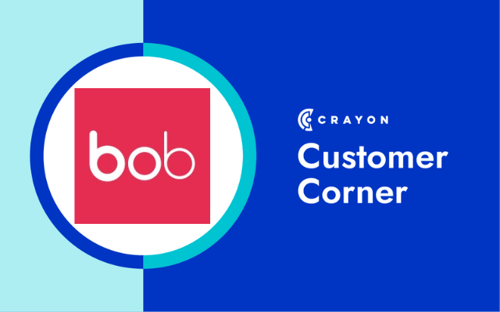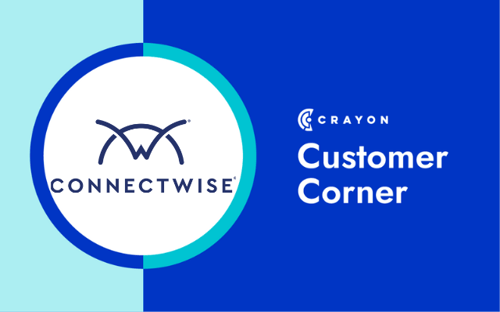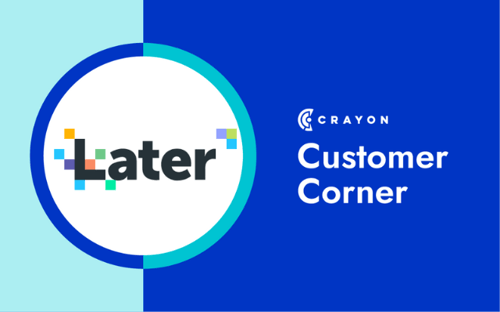After watching the new Amazon-meets-Middle-Earth show last week (it’s good!) I decided to watch the extended cuts of the Lord of the Rings movies. 10+ hours of whimsy and brimstone, what a delightful way to spend a rainy Saturday.
On Sunday, after walking my dogs, I sat down to write this blog post, and the first thought that popped into my head was:
Sauron, the omnipotent oligarch, the malevolent maelstrom, evil incarnate… would be really good at market intelligence.
Think about it.
Market intelligence encompasses any and all industry-related information. By gathering a broad swath of data on competitors, customers, prospects, partners, suppliers, distributors, and regulators, you can operate from a position of omniscience.
Sauron has spies and legions and seeing stones and 24 karat bands of corruption — if knowledge is power, I challenge you to name one entity, fictional or otherwise, more capable of knowing everything and acting on it than that fiery eye floating above a jagged, black tower.
In this post, we’ll define market intelligence (and how it differs from terms with which it’s often used interchangeably), how to gather and apply it, and some of the tools that make doing so a damn sight easier. You probably won’t be as good as Tolkein’s chief antagonist, but I’m confident we can get you pretty close.
Market Intelligence: Definition
Market intelligence is the aggregation and analysis of customer, competitor, product, and market data.
Businesses gather market intelligence for a variety of reasons — risk mitigation and informed decision making are probably at the top of that list. While it’s inherently broad, it’s by no means a catch-all term.
In fact, market intelligence is often used synonymously with business intelligence, competitive intelligence, and market research, though there are key, nuanced differences between these four terms.
Market Intelligence vs Business Intelligence
Business intelligence is self-reflective. It’s the process of aggregating and analyzing data about your business.
Then, said business intelligence is analyzed and used to guide future efficiencies, opportunities, and, ultimately, business growth.
Market Intelligence vs Competitive Intelligence
Competitive intelligence (CI) could very well be renamed “Market Intelligence: Competitor Edition.”
It’s the process of tracking, analyzing, and acting on data related to businesses you compete with directly or indirectly for customers. This differs from market intelligence because, you guessed it, it focuses specifically on competitors.
You aren’t going to consider the overall business landscape. You aren’t going to be internally-focussed (unless it’s in the context of a feature comparison). You’re looking for weaknesses so that you can run circles around your rivals.
Market Intelligence vs Market Research
Market research refers to the aggregation and analysis of data in pursuit of a marketing strategy.
If you were a pre-seed startup pitching investors , your deck would have a slide outlining your Total Addressable Market (TAM), Serviceable Addressable Market (SAM), and Serviceable Obtainable Market (SOM). The logic used to build this slide is a perfect example of market research.
To understand an opportunity, you need to know the size and makeup of that opportunity. Market research is how you get there.
What is Market Intelligence Software?
You know what market intelligence is (and what it isn’t).
But what tools are you supposed to use to gather and act on it? Excellent question.
What is market intelligence software?
Per our friends at G2:
Market intelligence software gathers publicly available information about companies and individuals from a variety of sources and uses it to create records or combine it with existing CRM data. Contact information, locations, financials, recent news and press releases are typical data sources mined for information and linked to the record. This combined profile provides companies with a more complete view of current and potential customers, identifies market opportunities, and informs decision-making.
With that in mind, here are a few of our favorite market intelligence tools (you’ll never believe #4!).
Market intelligence software for understanding the market landscape: Similarweb
Similarweb delivers cross-device strategic insights like no other. They collect more than `10 billions signals a day and have a team of more than 200 data scientists.
SImilarweb allows you to analyze market trends in real time so that you can take action when it matters most — not a quarter later.
Market intelligence software for customer research: Dovetail
Dovetail lets you analyze, synthesize, store, and share customer research in one collaborative and searchable platform. Fast.
Its transcription and tagging functionality let you gather and sort qualitative customer insights, distilling your findings based on a limitless combination of observations, enabling you to uncover themes in unstructured data (then share them with your team). Dovetail is great for identifying pain points and a-ha moments your customers experience, key data points that can be used across myriad modes of market intelligence.
Market intelligence software for revenue intelligence: Gong
It’s no secret: We love Gong (and yes, we have an integration).
It’s a phenomenal tool for capturing data about competitors, customers, and overall market sentiment straight from the horse’s mouth.
When Gong’s AI recognizes competitors in conversations with prospects and customers, Crayon automatically sends a battlecard packed with rich competitive intel directly to your sales reps’ inboxes. This is great.
But it’s also a phenomenal tool in the aggregate, a way for you to observe the volume and sentiment ascribed to specific competitors.
Market intelligence software for competitive intelligence: Crayon
You had to have seen this one coming from a mile away.
Crayon is the best-in-class competitive intelligence tool. And while competitive intelligence isn’t the only facet of market intelligence, it’s certainly an important one.
Crayon allows you to track the full breadth of your competitors’ digital footprints, empowering you to hone a significant strategic advantage.
The Market Intelligence Process: 3 Super Simple Steps
Step #1: Aggregation
As established above, market intelligence is a broad term.
You’re never just going to sit down with the goal of “doing a market intelligence”. Instead, you need to enter your market intelligence aggregation with:
- A specific goal
- The set of qualitative/quantitative data required to achieve that goal
Let’s say your goal is to help your product team determine which new feature to prioritize on the roadmap (the goal). Part of the team is in love with the idea of a budget forecasting tool, but their counterparts are pushing for a banner ad creator.
You’re going to want an understanding of:
- The competitive landscape
- Customer needs
- Pricing for said feature
Taking this crucial step will help you reign in the scope of your market intelligence research, which is imperative as you begin aggregating data.
Now it’s time to gather your market intelligence.
Returning to our new feature example above, this might involve customer interviews, current product usage metrics, feature comparison charts, budgeting (internal) and pricing (external) research, and more.
Step #2: Analysis
Once you’ve pulled your market intelligence together, it’s time to search for insights.
If we’re thinking about this in the context of our new feature research, let’s say your customer interviews, market research, and competitive analysis uncover empirical evidence that suggest your best option is to begin work on the budget forecasting tool instead of a banner ad creation tool. Why?
Despite the fact that it’ll take four more sprints, the customer interviews you conducted revealed that most of the people paying you are using Canva to quickly iterate on ads, and wouldn’t see much value from a creative tool. The price sensitivity survey you conducted led you to believe that there’s money to be made in forecasting.
And, finally, you’ve noticed that in your particular niche, there isn’t a solid budget forecasting tool; everyone uses janky spreadsheets or tries to square-peg-round-hole their way to competence with tools built for a different use case.
Now what?
Step #3: Activation
Time to do something with all that refined market intel!
You pitch your product team on your findings, and, with their data-backed buy-in, begin working on the messaging, positioning, and GTM strategy for the budget forecast tool.
Never Lose Sight of Your Competitive Landscape with Crayon's Market Intelligence Software
Whether you’re going deep on a single competitor or painting a holistic picture of your market, Crayon can help. Gather the data you need, not the noise you don’t.
What are you waiting for: Schedule your demo today!
.jpg)
Related Blog Posts
Popular Posts
-
 The 8 Free Market Research Tools and Resources You Need to Know
The 8 Free Market Research Tools and Resources You Need to Know
-
 How to Measure Product Launch Success: 12 KPIs You Should Be Tracking
How to Measure Product Launch Success: 12 KPIs You Should Be Tracking
-
 24 Questions to Consider for Your Next SWOT Analysis
24 Questions to Consider for Your Next SWOT Analysis
-
 How to Create a Competitive Matrix (Step-by-Step Guide With Examples + Free Templates)
How to Create a Competitive Matrix (Step-by-Step Guide With Examples + Free Templates)
-
 6 Competitive Advantage Examples From the Real World
6 Competitive Advantage Examples From the Real World





